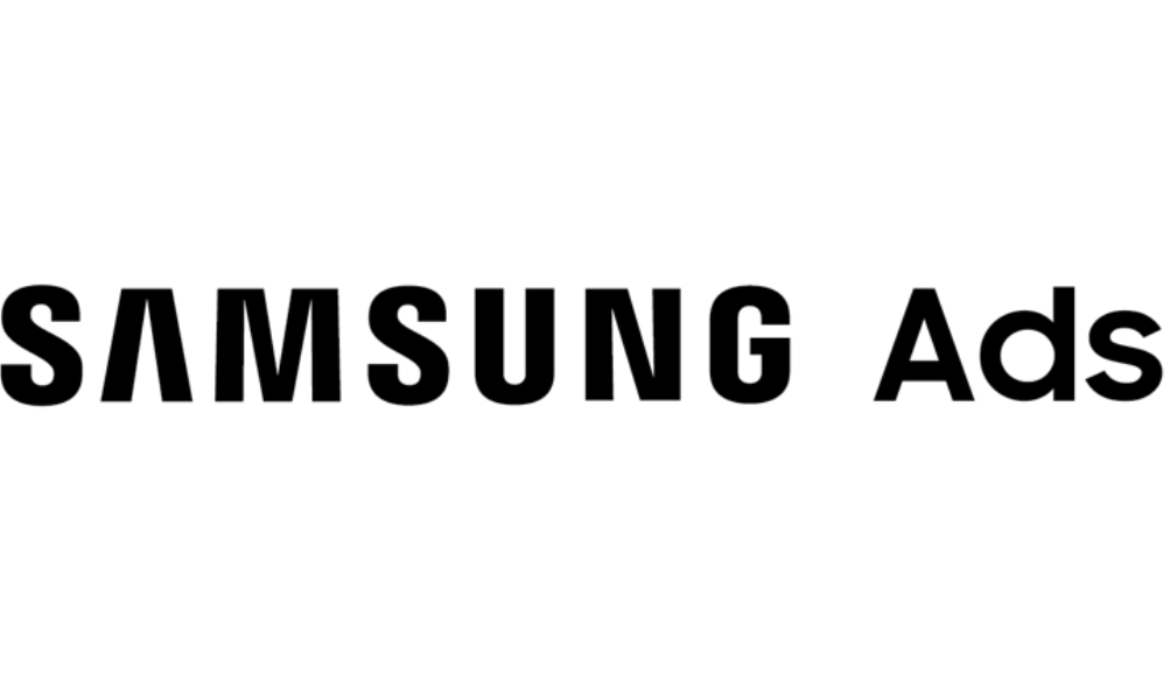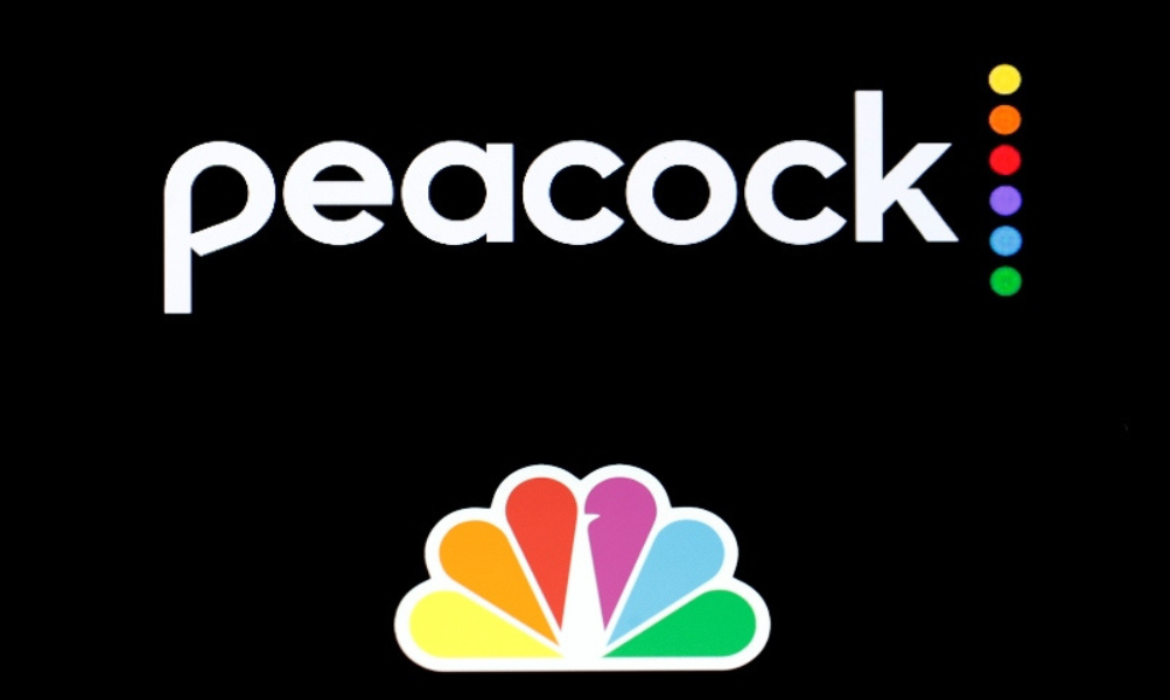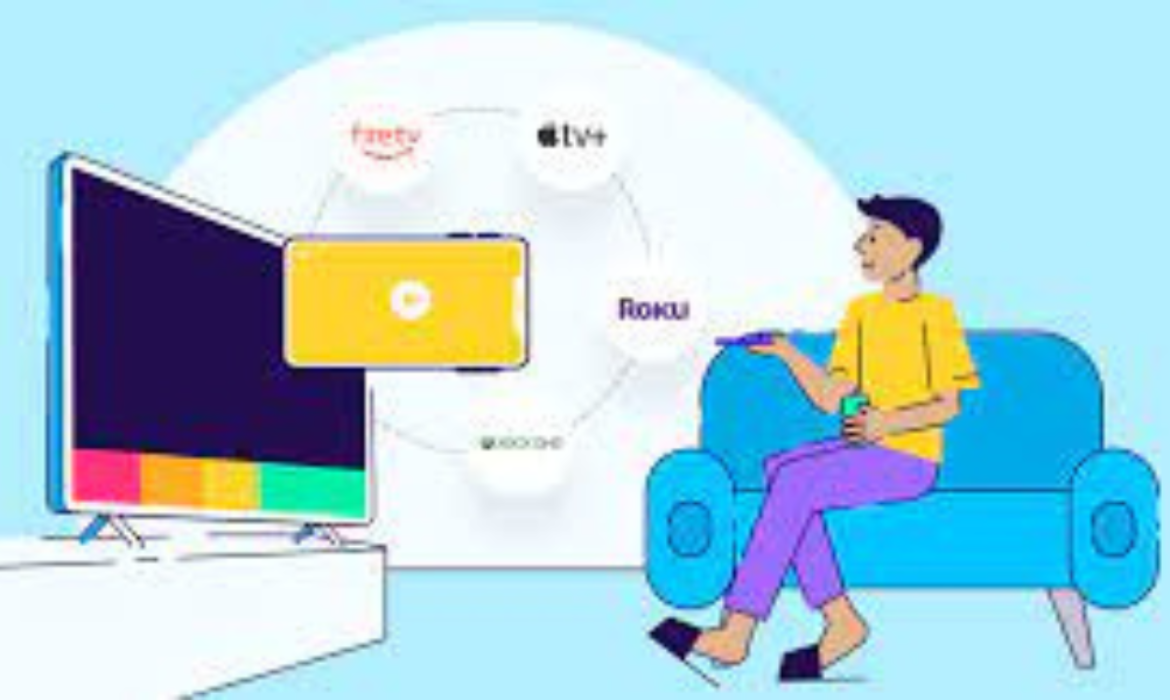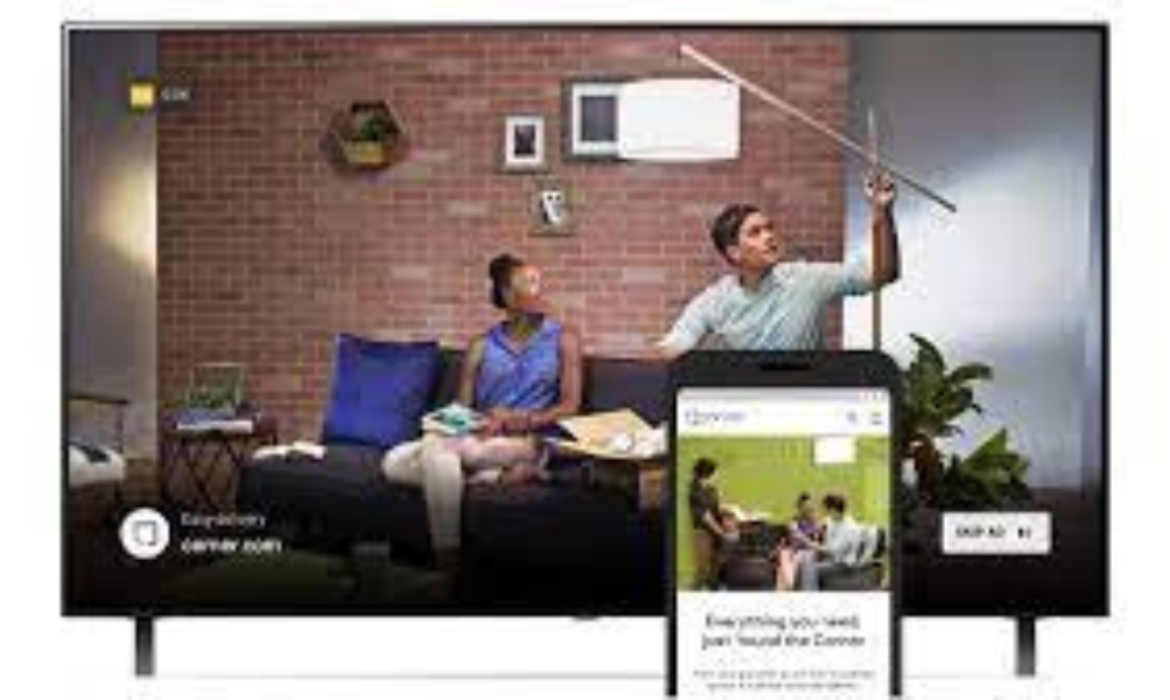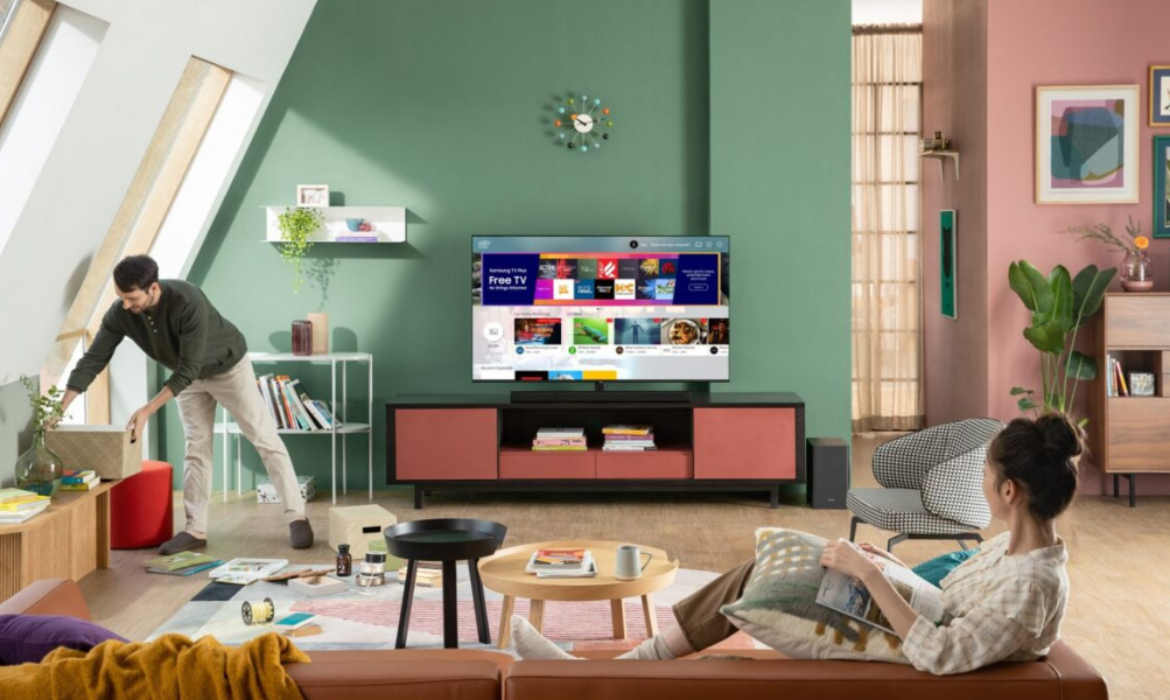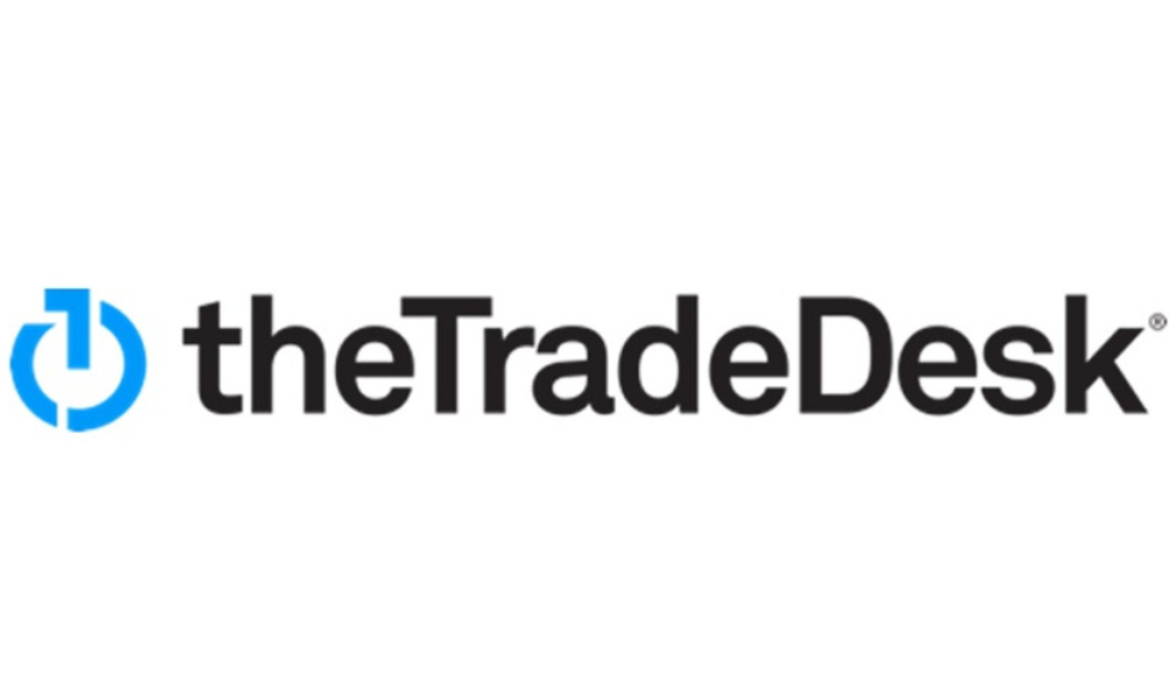Publicis Groupe’s Prashant Nandan Unveils Strategies for Connected TV Trends
Prashant Nandan, Senior Vice President of APEX at Publicis Groupe, is an experienced leader with over 15 years in digital marketing and advertising. With a deep understanding of go-to-market strategies, emerging media, and data-driven solutions, he unlocks business potential in the digital landscape. He is a visionary leader driving impactful results with proficiency in client servicing, media planning, programmatic, and more.
In this exclusive and captivating interview, he discusses effective strategies for Connected TV, transparency and Ad fraud, adapting to market dynamics, and embracing the Metaverse with AI.
Can you tell us about your journey and experience in creating go-to-market strategies across various digital channels?
My journey has taken me across mountains and oceans, through trials and triumphs, shaping me into a dreamer, a doer, and a believer in the power of determination. The digital world can be overwhelming, so I help connect businesses to digital ideas. My job spans the core areas of intelligence, investment, partnership, and innovation strategies for digital agencies and clients.
Creating go-to-market strategies: –
Each brand and market is unique, so it’s important to tailor our go-to-market strategy based on specific business goals, target audience, and industry dynamics. We regularly evaluate and refine our strategy to ensure it aligns with the brand’s evolving needs and market conditions. We help brands craft compelling and consistent messaging that resonates with the target audience and further tailor the messaging to each channel’s unique characteristics while maintaining a cohesive brand voice and identity. Adapting to changing market dynamics, we stay agile and capitalize on emerging opportunities. We are always open to experimenting with new channels or tactics based on data-driven insights and feedback from the target audience.
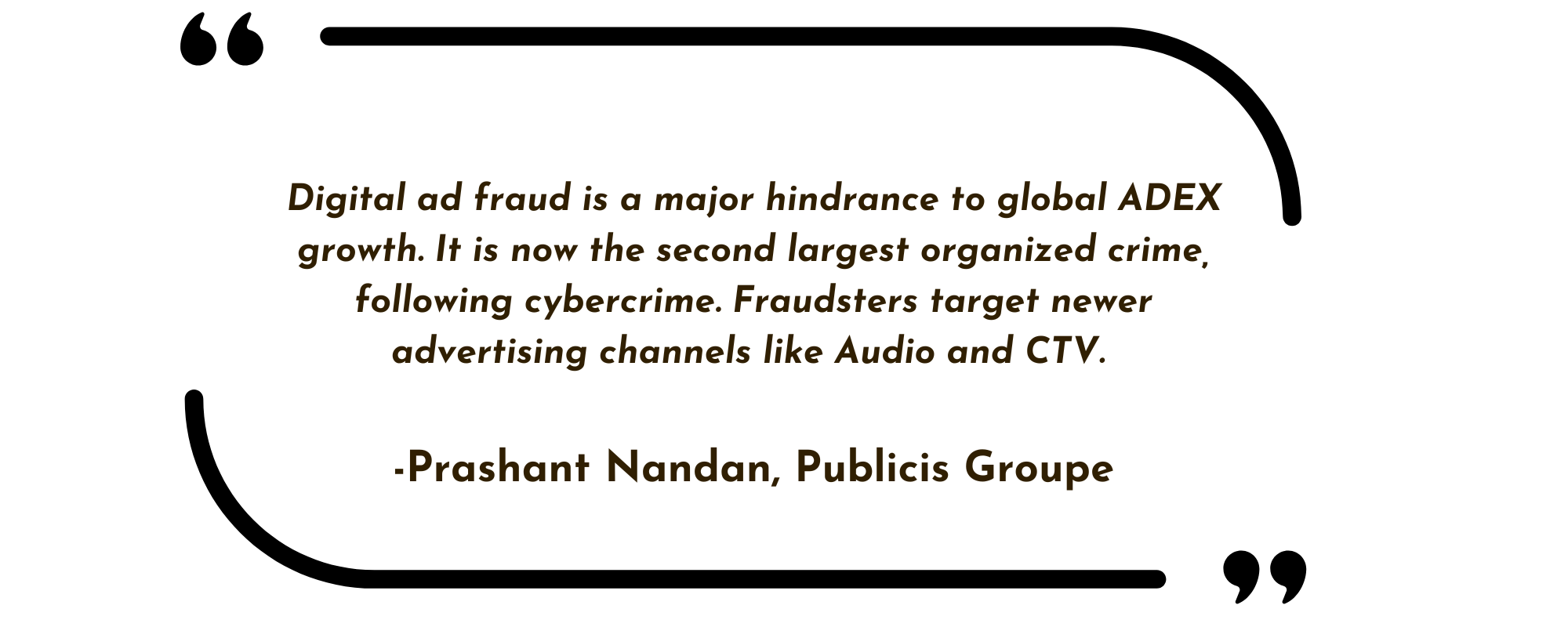
How do you determine the most effective mix of digital channels for a particular client or campaign?
Determining the most effective mix of digital channels for a particular campaign or client requires a data-driven approach. Here are some steps to consider:
- Clearly articulate the specific goals and objectives of the campaign. Whether it’s brand awareness, lead generation, sales conversion. Having a clear understanding of what brands want to achieve, will guide our channel selection.
- Develop a deep understanding of your target audience’s demographics, behaviours, preferences, and digital habits via different planning tools & primary/secondary research.
- Map out the customer journey from awareness to conversion. Identify touchpoints where our target audience interacts with digital channels throughout their decision-making process. Select channels that can effectively reach and engage our audience at each stage of the journey, ensuring a cohesive and seamless experience.
- Assess the strengths and capabilities of different digital channels. Consider factors such as audience reach, targeting capabilities, ad formats, pricing models, and performance metrics to evaluate how well each channel aligns with our campaign goals.
- Review past campaign data, industry benchmarks, and case studies to understand the performance of different digital channels in similar campaigns or industries.
- Manage the campaign budget and allocate resources based on the potential ROI of each channel. Evaluate the cost-effectiveness of channels by comparing factors such as CAC (Cost per customer acquisition), Cost per lead (CPL), and conversion rates. This analysis will help us optimize our budget allocation and prioritize channels that deliver the best return on investment(ROI).
- Implement robust brand safety, ad fraud, tracking, and analytics systems to monitor the performance of each channel.
How is your experience working with regional and global markets, and how do you adapt your strategies to different cultural contexts and market dynamics?
Working with different regional and global teams has given me exposure to diverse customer preferences, behaviors, and market trends. This experience provides valuable insights and learning opportunities, enabling me to refine our digital products, services, and marketing strategies. Engaging with different cultural contexts and market dynamics often fosters innovation and creativity, leading me to develop unique solutions and approaches that cater to specific client needs. I have learned to be adaptable and responsive to changing market dynamics, continuously monitoring client/internal stakeholder feedback, market trends, and the competitive landscape. This allows for timely adjustments to strategies, pricing, or product offerings to stay relevant and competitive.
What measures do you take to ensure that the programmatic campaigns are transparent and free from ad fraud?
Digital ad fraud is a major hindrance to global ADEX growth. It is now the second largest organized crime, following cybercrime. Fraudsters target newer advertising channels like Audio and CTV. The recent ICEBUCKET operation, exposed by White Ops, revealed a significant threat in the CTV space. By spoofing IP addresses of 2 million devices across 30+ countries, fraudsters made marketers unknowingly purchase CTV ad space that was served to bots. Additionally, DoubleVerify uncovered “BeatSting“, the first large-scale ad impression fraud scheme in digital audio advertising.
To combat ad fraud, all stakeholders, including advertisers, supply-side partners, device manufacturers, and server-side ad insertion, must be vigilant and implement solutions that address app fraud, device spoofing, Server-side Ad Insertion (SSAI) manipulation, non-stop ads, and malware-hijacked CTV devices. Here are tactics that advertisers can put in place to protect themselves.
- Bring a third-party vendor like Double Verify, Integral Ad Science, White Ops, Moat etc that detects fraud pre-bid level for protection against Digital ad fraud.
- Monitoring the location and device for all ads interaction & stick to premium inventory.
- All parties buying & selling video inventory should follow IAB guidelines, for CTV/OTT known as IFA ( Identifier for Advertising (IFA) series).
- Build a clean supply chain and remove the middlemen selling ad inventories.
- For Brand safety, advertisers should use keyword blocking, category blocks like sensitive, and unprofessional content, and work with the third party at the pre-bid level for brand safety.
- Pre-Bid filter of brand safety for checking App star ratings, age ratings, and store categories.
- In brand safety “Add blocking” should be available on all ad inventories to prevent ads from serving next to risky content.
- Give preference to programmatic inventory enabled with app-ads.txt.
- Avoid audience extension and long-tail “no-name” apps unless 100% transparent tracking and favorable terms and conditions are in place.
- The stringent clause at IO (Insertion order) for all level report transparency.
Can you explain the key differences between Connected TV and traditional TV advertising, and how these differences impact your go-to-market strategies?
The TV and digital industry use specific terms, like traditional/linear TV, OTT, and CTV. Here’s how to differentiate them.
| Linear TV or Traditional TV refers to the traditional method of content delivery where TV programs are only available at scheduled times. These programs are delivered by broadcast, cable, or satellite.
|
OTT refers to the delivery of on-demand video content through the internet by companies like YouTube, Netflix, Prime Video, and others. It allows viewers to watch their favorite shows anytime, bypassing traditional TV platforms such as cable and satellite. | CTV, or Connected TV, is a new viewing device that combines the advantages of traditional TV (shared viewing on a large screen) with digital streaming platforms (on-demand access to diverse content delivered via the internet).
|
Connected TV (CTV) devices like smart TVs, gaming consoles, and streaming sticks (such as Chromecast, Apple TV, Roku) enable users to access and display two types of content on a large screen:
1) Internet-delivered programming from broadcast and cable TV networks.
2) Digital-only streaming content from platforms like YouTube, Netflix, Prime Video, and Hotstar.
Go-to-Market Strategy for CTV: To achieve incremental reach, it is beneficial to combine Linear TV and CTV strategies. Linear TV maintains a strong reach among the TV-viewing population in India, and the hybrid viewing pattern is expected to persist for years. By merging the teams responsible for linear and connected TV buying, the goal of reaching viewers on any screen can be effectively accomplished.
Here are a few ways to do it:
- First, to drive incremental reach use Automatic Content Recognition (ACR) data to segment households that were exposed to the linear TV campaign and those who had not been exposed.
- Next, target non-exposed households with ads on CTV.
- Balance your frequency by targeting light TV viewers and cord-cutters more heavily than heavy TV viewers.
- ACR can identify households watching the competition ads and target them on different digital devices.
- Combine second screen targeting (Second screening” is a term for when viewers are watching television but are also using a secondary electronic device during that time) with your TV campaign.
- CTV ads are served programmatically so you can target audiences that have streamed content by genre, movies, TV series, actors, or directors.
Connecting linear and CTV ecosystems benefits advertisers with quality inventory, cross-screen audience reach, and effective measurement and attribution.
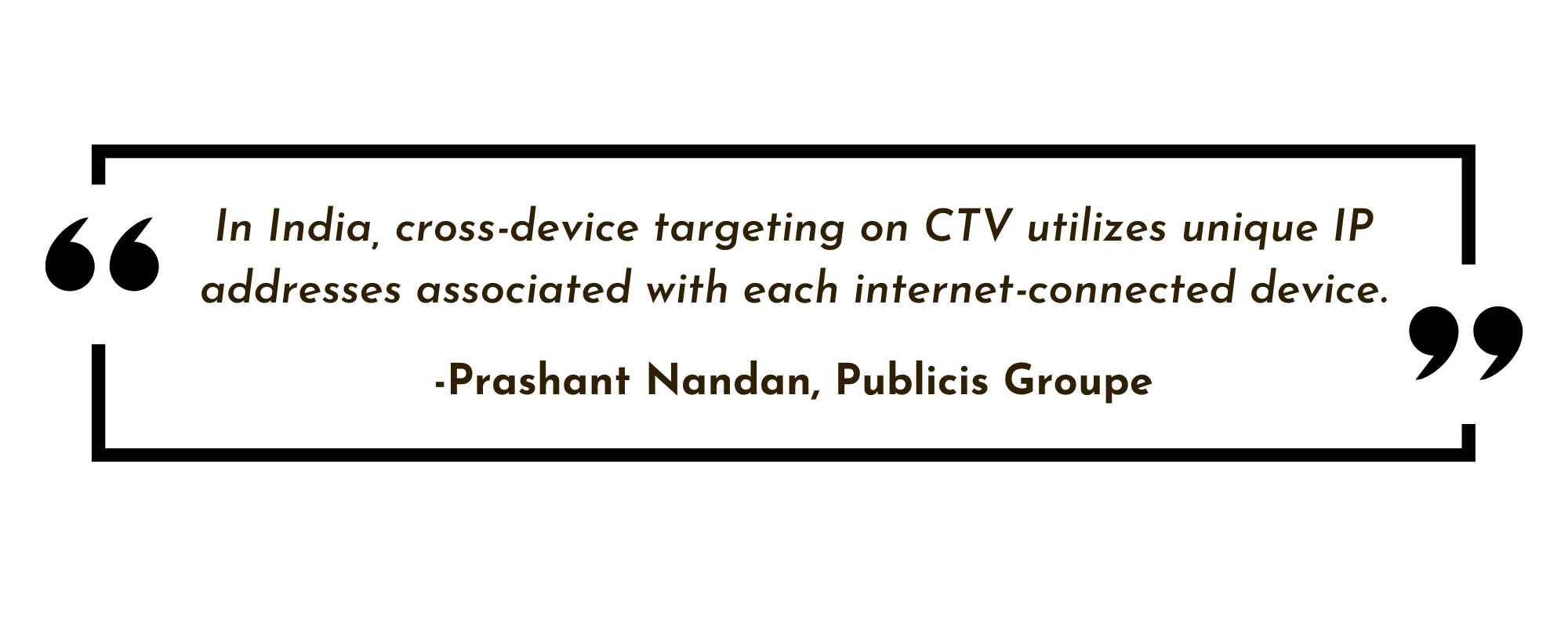
How do you manage cross-device targeting and attribution in your Connected TV?
In India, cross-device targeting on CTV utilizes unique IP addresses associated with each internet-connected device.
- Ad-tech companies employ diverse methods to identify IP addresses of devices accessing CTV content, which serve as unique identifiers for each device.
- Ad-tech companies collect and maintain databases of IP addresses associated with specific devices or households.
- Ad-tech companies utilize device graphs, which are databases or platforms that link multiple devices to the same individual or household. These graphs combine data points like IP addresses, cookies, device IDs, and other identifiers to create a comprehensive view of cross-device behavior. By analyzing shared IP addresses and Wi-Fi network connections, patterns and connections can be assessed to identify devices likely used by members of the same household.
- Once devices belonging to a household or individual are linked through IP address matching, brands can target specific ads to those devices across CTV platforms. Advertisers can leverage audience segmentation and targeting criteria, such as demographics, interests, and browsing behavior, to deliver relevant ads to the identified devices.
It’s important to note that IP address-based targeting for cross-device advertising has limitations. Dynamic IP addresses, shared networks, and privacy measures like virtual private networks (VPNs) can reduce the accuracy and precision of device-to-household mapping.
Measuring attribution on CTV : In this evolving stage, advertisers employ multiple approaches such as ad server reporting, incremental testing, panel surveys, and other data sources to refine measurement methodologies. These efforts aim to gain a comprehensive understanding of the attribution and effectiveness of CTV campaigns.
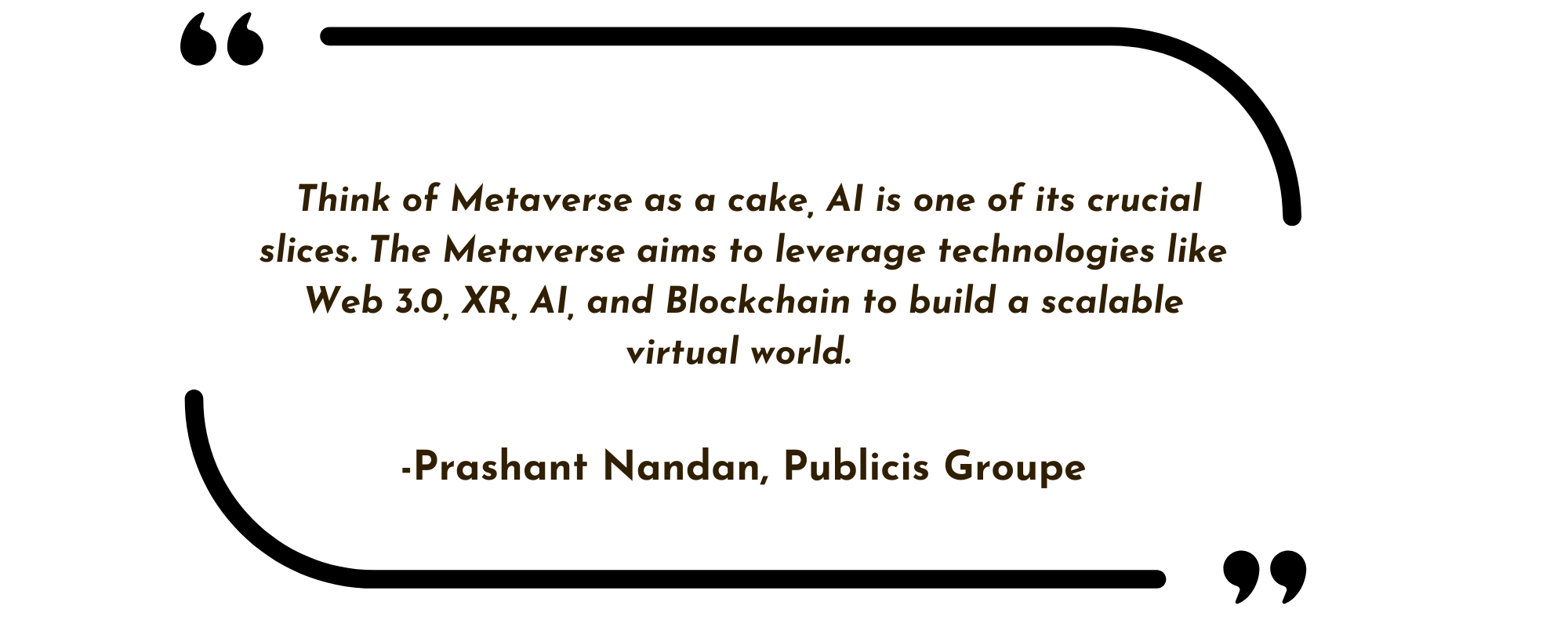
What are some key trends you see emerging in the Connected TV and how do you plan to capitalize on these trends in your strategies?
The cord-cutting audience is expected to grow. In the next 5 to 7 years, smart televisions are projected to become the norm in India, offering on-demand content, music streaming, video calling, and personalized recommendations. These TVs will also enable social interactions, co-watching, and content sharing. Additionally, smart TVs will embrace portability through cloud computing, allowing users to enjoy their favorite content anytime, anywhere.
In the future, TVs will go beyond traditional viewing, with OEMs adding services like gaming and health & fitness. Samsung, for example, has introduced a gaming hub on its smart TVs, allowing users to play games without a console or PC. Remote-controlled TVs will become outdated as voice-based and XR-controlled smart televisions gain prominence. While shopping directly on TV interfaces is still developing and limited to QR codes, tech platforms like Amazon and Google are experimenting with shoppable content ads.
CTV platforms are increasingly integrating with data management platforms (DMPs) and customer relationship management (CRM) systems, empowering advertisers to leverage first-party and third-party data for enhanced audience targeting and campaign effectiveness.
What is your perspective on the relationship between AI and the Metaverse? Do you believe AI is dominating or overshadowing the development of the Metaverse?
If we think of Metaverse as a cake, AI is one of its crucial slices. The Metaverse aims to leverage technologies like Web 3.0, XR, AI, and Blockchain to build a scalable virtual world. While AI has become a critical technology, predictive AI predates generative AI, utilizing statistical models, data analysis, and machine learning algorithms for future predictions. However, the Metaverse won’t achieve mainstream adoption overnight, as it faces challenges that need to be addressed. Concurrency and latency are foundational issues that must be solved.
Facebook, for instance, believes the Metaverse is at least 10 years away from entire operation due to these challenges. AI will play a facilitative role in the growth of the Metaverse, automating tasks such as creating and designing virtual environments, as well as aiding in content creation like 3D modeling and natural language processing.
Samsung Ads Launches Total Media Solutions To Manage Cross-Platform Campaigns
Samsung Ads has rolled out a total media solution designed to manage and measure media buys across networks’ linear and digital streaming apps. The solution is a complement to traditional, linear upfront media buys by identifying unexposed audiences on CTV ultimately achieving total audience reach for advertisers. It will provide enhanced reporting capabilities in a single view that includes data on ad exposure in real-time that can be used to optimize reach and efficiency across the entire media buy.
Interesting Read: All You Need To Know About Connected TV Advertising!
What is BYOM? How does it work?
The new Total Media Solution allows advertisers to bring their own media in passing the torch to Samsung programmatic demand-side platform(DSP) to handle campaign management and reach and frequency optimization for streaming app inventory that has been negotiated directly with TV networks Samsung Ads calls the strategy “bring your own media” (BYOM) to support ad placements that employ automated content recognition (ACR) data to identify which ads appear on the screen of smart TVs. Joe Melaragno, head of platform sales and agency development at Samsung Ads, said in this interview with Beet.TV,
We wanted to offer a solution that takes into account not just the linear ads that they’re buying using Samsung’s proprietary ACR data from our smart TVs, but also all the inventory that they’re buying in all of the new streaming apps.
Interesting Read: A Look Ahead: Convergence Of Linear TV And Digital TV Advertising
One-Stop-Shop For The Marketers
Samsung Ads offers marketers a “one-stop-shop” for the management, measurement, and optimization of campaigns across multiple media channels and devices. Having a one-stop shop for cross-platform campaigns, like the Total Media Solution within Samsung Ads’ DSP, means a more efficient workflow. Several DSP partners, such as Adobe, Experian, and Merkle, also offer access to curated audiences in a simplified and privacy-safe manner. Melaragno told Beet.TV,
This can both help to drive business outcomes, but also achieve that total audience reach across your linear buy as well as your buy in all these new streaming apps. We’re going to help to optimize the inventory on your behalf and we’re going to make sure that you reach that optimal reach and frequency across your holistic video buy.
Samsung Ads developed new tools for media buyers in response to a significant shift in viewer behavior. There was a surge in streaming services following the pandemic in search of new programs. Meanwhile, media companies continued to offer ad-supported video on demand (AVOD) and free ad-supported TV apps (FAST) which contributed to audience fragmentation. Buyers will work with every media company and will negotiate the price with them on their own terms, Melaragno said,
We wanted to offer the solution that allows them to bring that media that they purchased, whether it’s through the upfront or through the scatter market, and for us to help them manage it across their total audience on Samsung smart TVs.
As quoted by Adexchanger, he also added that the pre-upfronts timing is intentional.
Advertisers are thinking about their next upfront cycle , and Samsung Ads can help them optimize across all buys they’re working on through current partners.
The company will exhibit its Total Media Solution at the IAB NewFronts presentation on May 3 at 9 a.m. ET. With Total Media Solution, Samsung Ads wants to assist advertisers in understanding and planning media budgets based on the shifting balance between linear and streaming audiences.
Interesting Read: AVOD strategy For Netflix Ahead: Should Advertisers Rejoice?
Unlock The CTV Opportunity: What The Future Looks Like
2022 is the year of CTV- A captive audience, and an engaging screen!
Advertising on Connected Television (CTV) is like an open invitation into a customer’s living room. A prime seat that cannot be missed. And here are the numbers to prove it!
eMarketer forecasts that CTV ad spend will reach $14.44 billion, up by 60% from 2020. It will more than double by 2025, soaring past $30 billion.
It is possible to unlock those advertising dollars by combining audience-based buying with the type of high-quality, engaging content that linear TV has historically been renowned for. Industry experts aim to focus more on identity, interactivity and engagement, growth of ad-supported video-on-demand(AVOD), and convergence of TV and online videos.
Interesting Read: Connected TV Explained: The Essential Glossary Of CTV
Measurement and Identification
Ad measurement is a challenge primarily from the fragmentation of the ecosystem. In other words, there’s no common currency.
Nielsen’s panel-based approach worked seamlessly within the linear TV but proved insufficient for a highly dynamic and addressable CTV ecosystem. The approach is not equipped to provide advertisers with the required insight into a campaign’s performance. This resulted in losing its Media Rating Council accreditation in September
The fundamental problem is the lack of a common identifier across the various CTV platforms. A universal, cross-platform identifier would simplify planning and analyzing CTV campaigns for media buyers. Therefore, alternative currencies are experimented with to measure deduplicated audiences across linear and CTV platforms.
CTV is using IP addresses heavily as its last non-consent-based identifier. However, IP addresses could be in for reckoning in 2022 thanks to the rising privacy regulations. So, industry players must continue trialing new ways to make the most of the audience data they have.
Meanwhile, there will be a rise in clean room technology. Data sharing in clean rooms is a safe, secure way for media companies and advertisers to share their first-party data for targeting and measuring purposes. The system will help TV advertisers go beyond basic demographics such as gender and age and make more advanced audience-based purchases.
Interesting Read: Clean Rooms Explained: How Marketers Can Prepare For Cookieless World
Interactivity and Engagement
This is the golden era for content. Another upcoming big shift in the landscape of CTV – Interactive Content
High-quality, creative and engaging content will be key to attracting committed viewers. CTV breathes new life into interactive programming and helps brands build a connection with consumers
Viewers that engage in interactive programming are more likely to respond to eCommerce advertising when watching TV content. Users who can interact with an ad through a quiz, ad selector, or even a simple catalog of brands often stay engaged for a longer period beyond the ad runtime.
Purchases of what users see on the screen will speed up. Advertisers must measure beyond impressions to gauge engagement in new ways and drive real-world purchases.
Having said that, watching TV doesn’t suffice – it depends on what you are watching and how engaged you are with its matter. That’ll determine the audience engagement with the ad break and the messages in the ad break.
Ecommerce marketers benefit from CTV channels because they drive action across the funnel. An ad on CTV often prompts people to search online for what they want after viewing it.
Interesting Read: All You Need To Know About Connected TV Advertising!
AVOD is Inevitable
Well, all premium video content does not have ads.
In 2021, however, subscription content tipped the scales in favor of ad-supported content. Millions of subscribers subscribed to streaming services very quickly, and the trend only accelerated during the 2020 pandemic.
The most popular option, until recently, was subscription video on demand. Despite this, trends in the market indicate that advertising-based VOD is growing at breakneck speed. This finding is backed up by a report from the IAB showing that 62% of viewers prefer free content with ads. One such company, Roku, revealed in its 2020 annual report that 14 million new accounts were opened using its ad-based model.
The numbers agree that subscription fatigue is setting in. TVision reported that the time spent on AVOD increased 9.3% from Q1 2021 to a 38% share for Q3 2021. Meanwhile, subscription-based platform (SVOD) viewership decreased by 8.6%.
The penetration of AVOD services will also not slow down anytime soon, especially as more quality content is coming to those platforms – that’s the game-changer. It’s a virtuous cycle: More content means more viewership which leads to more advertising dollars. It’s highly that monetization will continue to gain popularity with AVOD’s capacity to bring together viewers, advertisers, and content creators.
2022 will see big shifts by new entrances into the market who will have better access to TV with more personalized targeting. However, this does not mean all doom and gloom for SVOD. In order to stay on top of the new normal – endless consumer choice – streaming platforms need to invest in and expand their content offering.
Is Convergence the Future?
Advertisers struggle to reach scale as viewership habits shifts from traditional linear television to the internet-enabled connected TV (CTV) or other video-on-demand(VOD) options. In spite of the fact that traditional linear TV still has mass appeal, and is an essential component in any media plan, advertisers can also pursue nuance, flexibility, and precision with CTV.
So, can convergence be the answer?
For linear campaigns, advertisers are turning to CTV for incremental reach. An advertiser’s incremental reach represents deduplicated audience across their linear and CTV ads. Ad agencies that couldn’t reach users with linear TV schedules are now reaching them through additional CTV buys. It’s possible to achieve incrementality because consumers desire choice and want to have all their options at hand.
In the era of big data, we know more than ever. There is an old chestnut that says, “if you know better, do better.” CTV provides unprecedented opportunities for strategic growth.
Interesting Read: A Look Ahead: Convergence Of Linear TV And Digital TV Advertising
Is Global Ad Revenue Experiencing Fastest Growth In Advertising History?
The GroupM end-of-year advertising review offers marketers a broad view of ad revenues and trends over the past year and what’s anticipated for the coming year. Here are some highlights from the group’s 2021 report:
- In 2021, digital advertising is on track to grow 31%, and it will comprise 64.4% of all advertising, up from 52.1% in 2019. More than 50 percent of total ad revenue this year came from Alphabet, Amazon, and Meta, outside of China.
- Global advertising revenue is expected to grow at 22.5% for the year 2021, totaling approximately $763 billion.
- Next year will witness strong growth and it is estimated to grow at 9.7%.
The stable growth will continue even after 2021. In a briefing, Brian Wieser, GroupM’s global president of business intelligence said,
“It’s possible that this is the fastest growth in the history of advertising, at least in known history.”
Growth projections for 2021 outstripped GroupM’s midyear projections. He further said,
“We do expect some kind of reversion back toward a normal mid-single-digit growth rate over time, but at very elevated levels. In other words, we’re creating a new plateau for future growth to occur.”
Interesting Read: The Ultimate A-Z Glossary Of Digital Advertising!
The Talking TV
The television marketplace is changing rapidly but the growth is generally flat.
There will be an 11.7% growth in global TV ad spending in 2021, but this will not compensate for the 2020 pandemic-induced shortfall. Reports suggest that the industry won’t rebound to its 2019 levels before 2023. TV advertising will make up 21% of total advertising revenue this year.
A contributing factor to slower growth is that smaller companies find it more difficult to buy television advertising. Historically, television has been used for brand-building, using high-quality video messaging to make a lasting impression on the minds of consumers. However, that can be very expensive for small brands that advertise exclusively online.
No Impact Of Apple Change On The Advertisers
The changes in Apple iOS 14 may have impacted marketers but did not have any adverse effect on digital advertising as a whole. Wieser explained,
“The changes in data do not cause a change in budgets allocated to digital media. We saw this with GDPR—no observable impact at an industry level. Even though the data fidelity is lower now than it might have been before, it doesn’t change the budgets, it doesn’t impact the growth rate. But you never know, things could change.”
Interesting Read: Apple Will Now Ask Permission Before Showing Its Own Targeted Ads
What Lies Ahead For Marketers
GroupM forecasts that Connected TV (CTV) is poised to grow “substantially,” – roughly $17 billion in 2022 and $33 billion by 2026. It saw a surge in audience viewership during the 2020 pandemic. Currently, viewers make up 24% of total TV consumption, which is up from 19% a year ago.
Advertisers who buy ads based on user data, including programmatically, may view this additional inventory as an opportunity to increase revenues. But since three of the most popular streamers—Amazon Prime Video, Disney+, and Netflix—are ad-free and may stay the same in the near future. So, marketers need to come up with some alternate strategies to reach viewers.
Even though the scope of advertising would be harder on TV but marketers should not admit defeat. They should look for new ways to collaborate with the streaming partners. They can capitalize on their brand equity by “connecting their service to the brand in the minds of the consumer.”
Interesting Read: Connected TV Explained: The Essential Glossary Of CTV
Marketers Gain Direct Access To NBC Universal’s Peacock Via Yahoo DSP
NBC Universal has teamed up with Yahoo’s demand-side platform to give advertisers direct access to Peacock’s streaming and live content inventory. It is a programmatically guaranteed inventory, thereby facilitating scatter-buying and upfront buying. Programmatic guaranteed means the inventory is reserved for that buyer at a negotiated price.
With a limited number of streaming services, audiences are willing to pay for and many subscription streams stalling advertising-funded platforms become a more appealing option. In general, advertisers are more willing to invest in TV campaigns with larger audiences as long as the complex CTV buying environment does not deter them. This deal will increase the reach of advertisers’ Connected TV (CTV) campaigns. Nearly 70% of the Peacock audience is incremental to other NBCU digital video services.
Marketers can have guaranteed access to Peacock’s complete premium content library including NBC Sports, NBCU Next-Day Prime, Sky News, the Universal Pictures film library, and Peacock Originals.
The DSP will enable advertisers to target users based on location, age/gender, Peacock in-house segments, or contextually pre-defined, dynamic, or seasonal packages. This is Peacock’s first programmatic launch, with Yahoo serving as a pilot partner. Previously, Yahoo delivered programmatic campaigns for leading CPG, automotive, and telecom brands.
Interesting Read: All You Need To Know About Connected TV Advertising!
Pricing and programming Are Important
According to a blog by Yahoo, it said the results are encouraging. A major telecom brand could reach highly engaged audiences with Peacock’s on-demand content.
“For this advertiser, a resounding 92% of viewers reached on Peacock were not reached on linear TV, showcasing the value of Peacock’s digital-first audience.”
It further explained that the client the importance of Peacock in their strategy.
“Using Yahoo’s Unified TV Report, the client was also able to understand how Peacock fit within its overall TV strategy, from incremental reach to cost per incremental household.”
Yahoo points out that audiences are attracted to AVOD services.

Image Credit: Yahoo
Flexibility in pricing and programming is increasingly important to consumers when choosing their streaming service.
“In fact, 83% of viewers say they’re willing to try an ad-supported version of services to save money.”
For Peacock to make the case for advertisers, they require a dependable DSP partner to up the ad revenue and ensure ads are finding the relevant audiences for advertisers.
Interesting Read: Connected TV Explained: The Essential Glossary Of CTV
Connected TV Explained: The Essential Glossary Of CTV
Connected TV (CTV) is growing rapidly in programmatic advertising and taking it by storm. And it does not come as a surprise!
CTV ads are most effective, highly targeted, trackable, and brand safe. Compared to traditional TV advertising, they offer broadcast-quality ad experiences. According to the CTV Neilsen guide, 60% of U.S. advertisers plan to shift ad dollars from linear TV to either connected TV (CTV) or over-the-top (OTT) this year.
Given the growth in consumption and advertising opportunities, CTV usage has increased by 123% since 2018. However, given the breadth of CTV, identifying ad opportunities is not easy. In most cases, Over-the-top (OTT) and Connected TV (CTV) devices are confused for one another when accessing TV/video content. Moreover, adding Linear TV or traditional TV (in today’s parlance) makes the water even murkier.
Thus, this glossary explains the difference between Connected TV (CTV), Over-The-Top (OTT), and Linear TV. In a quickly evolving programmatic advertising landscape, the glossary aggregates many terms and acronyms used by marketers.
Interesting Read: All You Need To Know About Connected TV Advertising!
First Things First
Before we delve into other terminologies, let us understand the baseline definition of certain streaming terms.

Image Credit: Criteo
Linear TV
Linear TV is a traditional cable or satellite TV with set viewing timings. A viewer can watch a show at a specific time on a specific channel.
Connected TV
CTV or Connected TV simply means any device like smart TV used to stream TV and video content through the internet. A TV set that can access OTT content and is connected to the internet. According to a recent report, 80% of U.S. TV households have at least one connected TV device. Connected to the digital world, CTV can display programmatic ads to its viewers in real-time.
Interesting Read: Trade Desk Partners With Samsung Ads For Programmatic CTV
Over-The-Top (OTT)
To put it simply, this is the process of streaming content from an app on a CTV or any other internet-connected device. In addition to video-on-demand platforms, OTT applications include audio streaming, messaging, and internet-based phone services.

Image Credit: Clear code
A Similar Offering
There is a new set of industry jargon that is often confused with Connected TV advertising. They are remotely close to CTV but not the same.
Programmatic TV
A method of buying and delivering ads on linear TV with a technology-automated and data-driven slant. Some TV ad slots are available for programmatic purchase through DSPs. The most important point to note is that the ads are different from Connected TV (CTV). There is a common misconception that programmatic TV is referred to as “CTV Programmatic” or “OTT Programmatic.” These terms refer to Connected TV, as opposed to traditional TV. Understanding this difference is vital for advertising professionals in this new environment.

Image Credit: Smarty Ads
Advanced TV
An umbrella term referring to any TV content streamed through the internet -live or on-demand. It includes OTT, connected TV (CTV), and addressable TV but beyond traditional, linear TV models. Advanced TV’s is popular worldwide. A Samsung study suggests 63% of all TV viewing time is held on streaming services.

Image Credit: Liveramp
Addressable TV
Addressable TV or ATV is a technical ability to provide each household watching a different ad experience for the same program. It enables advertisers to target specific audiences with individual advertisements and optimize their marketing campaigns. Ads for addressable TV are served programmatically just as they are for addressable digital advertising.
For instance, Mr.A might experience real estate advertisements because they are looking to buy a house, while you see an ad for a motorbike based on your previous interest.

Image Credit: Broadband TV
The below image explains how the addressable TV works.

Image Credit: IAB
Interesting Read: Here, There, Everywhere, It Is Cross-Screen Advertising!
Inventory and Formats
Video on Demand (VOD)
Video-On-Demand (VOD) is also known as Addressable VOD. Users can watch the content they enjoy at any time that’s convenient for them. Television viewers don’t plan their schedules around the TV, instead, they fit it into their own busy schedules.VOD content can be streamed or downloaded after it is aired live. As a result, viewers can access it anytime and anywhere even if they miss an episode. It can be found on set-top boxes, OTT content services, mobile web, mobile apps, and video streaming services. Unlike traditional TV, viewers can pause, fast-forward, and play as per their choice, and ads are placed within the content.

Image Credit: Pallycon
SVOD
Subscription video on demand (SVOD) is a streaming service based on a subscription model. Consumers subscribe for a fee, to access a catalog of on-demand content and watch are ad-free content. SVOD examples include Netflix, Amazon Prime, Disney+, HBO MAX, and AppleTV+.
Some SVOD providers, on the other hand, offer a hybrid model that offers ad-supported content at a lower subscription price. Hybrids are categorized under SVOD since users still need to login and pay a subscription fee. Hulu, Peacock, ESPN+, and Quibi are a few examples.
AVOD
Advertising-based video on demand (AVOD) is ad-supported content and free to consumers. YouTube and Hulu are the best examples.
TVOD
Transactional video on demand is the opposite of SVOD. Customers buy content on a per-view basis. A customer would pay for a movie or TV show that they desire to watch. Examples of TVOD are Google Play, Apple iTunes, or YouTube movies.
Multi-channel Video Programming Distributor (MVPD)
In layman’s terms, it is a service that provides multiple television channels. The service providers deliver video programming services for a subscription fee through cable or satellite television. Examples include Comcast, DirecTV, DISH, Cox, Verizon, and more.
vMVPD
vMVPD stands for Virtual multichannel video programming distributor (yes, quite a mouthful). These are also called skinny bundles and offer economical digital cable or satellite packages. A streaming service or service provider provides video programming over the Internet without creating their own content. Sling TV, Playstation Vue, Pluto TV (Viacom), Xumo are a few examples.
Wrapping Up
Connected TV (CTV) is becoming a part of every marketer’s brand mix. Brace yourself for the future of advertising. This guide is an effort to well-versed you in the exciting world of Connected TV (CTV) terms.
Quick Recap
A quick recap of the full-on dictionary of Connected TV (CTV)terms with an illustrated guide.

Image Credit: Sharethrough
Interesting Read: The Ultimate A-Z Glossary Of Digital Advertising!
On Connected TVs, YouTube Makes Its Ads More Shoppable!
YouTube makes its ads shoppable on Connected TV (CTV). The video action campaigns expansion to Connected TV will help advertisers reach more potential customers. Video action campaigns combine inventory from Google and YouTube video partners and now YouTube CTV. Advertisers can take advantage of YouTube on CTV to generate leads and conversions.
Romana Pawar, Director of Product Management for YouTube Ads said,
To help consumers more easily learn about the products and services they’re interested in, we’re making YouTube ads on connected TVs more shoppable.
She further added that the expansion is beneficial to the advertisers as well,
We’re expanding Video action campaigns to CTVs to help advertisers drive more online sales or generate leads, and grow their business.
Related Read: All You Need To Know About Connected TV Advertising!
Connected TV & Youtube Ads: How Does It Work?
Viewers can watch video action campaigns on TV, and a URL appears at the bottom of their screens that facilitate shopping. They can click on the URL to be whisked away directly to the brand’s website from their mobile or desktop without interrupting their viewing session.
On the advertisers’ side, they can measure the effectiveness of the campaign in real-time using Conversion Lift beta on user actions such as website visits, sign-ups, and purchases.
An internal study shows that in the U.S., over 120 million people streamed YouTube or YouTube TV on their TV screens in December 2020. Early studies indicate that more than 90% of conversions originating from CTV would not have been reachable from mobile and desktop devices. It is thus evident that “the living room is becoming an essential place for brands to attract new audiences.”
Video action campaigns are now available around the world through Google Ads.
Interesting Read: Trade Desk Partners With Samsung Ads For Programmatic CTV
Samsung Ads Introduces Predictive Planner To Improve AVOD Ad Buys
Samsung Ads constructs a Connected TV predictive planner to help advertisers reach a particular audience in the AVOD space. The tool will help brands measure the scale, behavior, and time their targeted audience spends with ad-supported videos.
The analytical device, called ‘Viewers Advisor’, will utilize Samsung’s first-party data mixed with third-party information and will provide an insight to the businesses on how the audiences are spending time on AVOD along with their content preferences. The device can also be used for concentrating on Samsung buys across all budget levels.
As quoted by Adweek, Justin Evans, global head of analytics and insights for Samsung Ads said,
A lot of players were articulating that they were aware it’s an urgent need for them to be present in AVOD, but they felt they did not have the specific detailed understanding about how their audiences use AVOD—or even whether they do.
Our providing that type of information on a very specific deterministic basis was an important way for them to understand how to navigate CTV
Similar News: Trade Desk Partners With Samsung Ads For Programmatic CTV
How Will The Viewers Advisor Help The Advertisers?
`This device will help businesses in sectors like Auto, E-commerce, and CPG. Generally, brands can identify how and where target viewers watch TV when they upload first-party data or third-party data.
On the other hand, Samsung will assist to track viewing behavior using ACR technology and identify AVOD viewers in the target audience. In addition, it will also help brands understand the behavior of the target audience such as how many apps they use each day and at what times.
As per eMarketer, in 2021 advertisers will increase their upfront CTV video ad spending to $4.51 billion and expects to see nearly $6 billion in 2022. Samsung has 13 million heavy e-commerce consumers within its platform. Out of which 9 million consumers are classified as mostly streamers who spends 85% of their time watching CTV content. Half of them are focused on AVOD with viewers watching an average of 1.3 hours of AVOD per day.
As quoted by Ad exchanger, Justin Evans said,
“We’re in a position to paint a portrait for the advertiser of what the viewers’ advert expertise goes to be within the AVOD ecosystem. The attain and frequency profile we offer is about what sort of promoting success the consumer can obtain inside the Samsung ecosystem.”
Similar News: Demand Side Platform (DSP) Launched By Samsung Ads
As reported by Adweek, Samsung’s AVOD offering will provide advertisers complete insights into the experience their targeted customers will have in AVOD which would make them comfortable to make investments and profits in this space and instruments. Viewers Advisor is the latest addition to Samsung’s AVOD ad offerings. Earlier also, the CTV company had added new ad experiences to enhance AVOD offering Samsung TV Plus.
Evans stated to Adweek that they are encouraging advertisers to spend a large part of their budget on AVOD.
“We see audiences spend larger chunks of their time in AVOD, and this capability tells advertisers how to spend that money wisely.”
Interesting Read: All You Need To Know About Connected TV Advertising!
Trade Desk Partners With Samsung Ads For Programmatic CTV
The Trade Desk announced a collaboration with Samsung Ads, a platform for advanced TV advertising solutions that can aid Indian marketers to reach millions of engaged viewers all over the open internet. The Trade Desk platform will provide marketers access to Connected TV (CTV) inventory on Samsung Smart TV, offered through its free, ad-supported on-demand (AVOD) streaming service, Samsung TV Plus.
The collaboration will enable marketers to measure their advertisement campaigns efficiently compared to linear TV. The marketers can compare and measure the ad opportunities across the channels on the open internet by applying the same level of data-driven insights on any digital marketing advertising but in a transparent way.
Related Article: All You Need To Know About Connected TV Advertising!
Trade Desk is expanding CTV advertising options to India’s open internet market such as over-the-top (OTT), music streaming, and mobile apps. India’s programmatic-first market is growing rapidly, with a prediction of 74% of total digital ad sales to be programmatic by next year. Prabhvir Sahmey, senior director, Samsung Ads, said,
India is the first market where we are launching a programmatic first strategy. Our collaboration with The Trade Desk is integral to facilitating wide access to our inventory, offering brands the opportunity to extend their reach in a premium, brand-safe environment – the biggest screen in the house.
A report estimated that CTV will reach over 40 million households in India by 2025 from about 7 million today. The growth of Connected TV is phenomenal and the engagement levels are higher compared to smartphones. For marketers, CTV is a brilliant opportunity and the biggest segment for advertising investment.
Therefore, more spending is witnessed on programmatic advertising. Tejinder Gill, general manager, The Trade Desk in India, said,
Indian marketers are increasing their spends on digital advertising and steadily turning to programmatic advertising, which offers real-time measurement and better control over ad frequency. CTV, which is rapidly gaining adoption among consumers, is one of the best platforms in India for programmatic advertising
He also added –
As CTV advertising does not rely on third-party cookies, marketers can also measure and compare the effectiveness of their CTV advertising with other channels on the open internet. We will leverage our global expertise to pioneer CTV advertising on the open internet in India, starting with our collaboration with Samsung Ads
Interesting Read: CTV Advertising To Reach $21B In 2021 In The United States!
IAS Acquires Publica For $220M To “Help Advertisers”
Integral Ad Science (IAS) has invested $220 million in a cash and stock transaction to acquire Publica, a connected TV advertising platform. Every month, Publica serves approximately three billion adverts on CTV.
IAS is advancing its approach in this market with this acquisition, which aims to assist publishers market their video programs better across CTV platforms while also developing new solutions to provide advertisers visibility into the quality of this inventory.
With this acquisition, Ben Antier, co-founder and CEO of Publica, will now report to IAS CEO Lisa Utzschneider. Furthermore, the Publica brand will be added to IAS’ product line.
IAS’s decision seems strategic and logical as Publica helps boost publisher yield by connecting supply-side platforms to unique CTV inventory.
Publica’s unified auction, over-the-top (OTT) header bidding for programmatic purchasing, audience management, campaign management, server-side ad insertion (SSAI), ad pod automation, and sophisticated analytics would all be added to IAS’s CTV capabilities as a result of the deal.
Utzschneider, CEO, IAS commented on the acquisition –
Advanced data and technology will fuel the future of addressable CTV advertising. Now video publishers can increase their revenue, and in the future, we will help advertisers with a trusted way to measure the results of their growing CTV budgets
IAS’s current CTV technologies, which include the industry’s first CTV verification solution for worldwide invalid traffic (IVT) and viewability across programmatic and direct buying on all applications and providers, will be expanded with this acquisition.
Moreover, in the next months, IAS aims to provide a brand safety and appropriateness solution for CTV advertisers and publishers, backed by Publica’s platform and CTV content analytics.
CTV advertising is on the rise, and according to eMarketer, advertisers will spend more than $13.4 billion on CTV this year, with that figure expected to rise to $24.7 billion by 2024.


